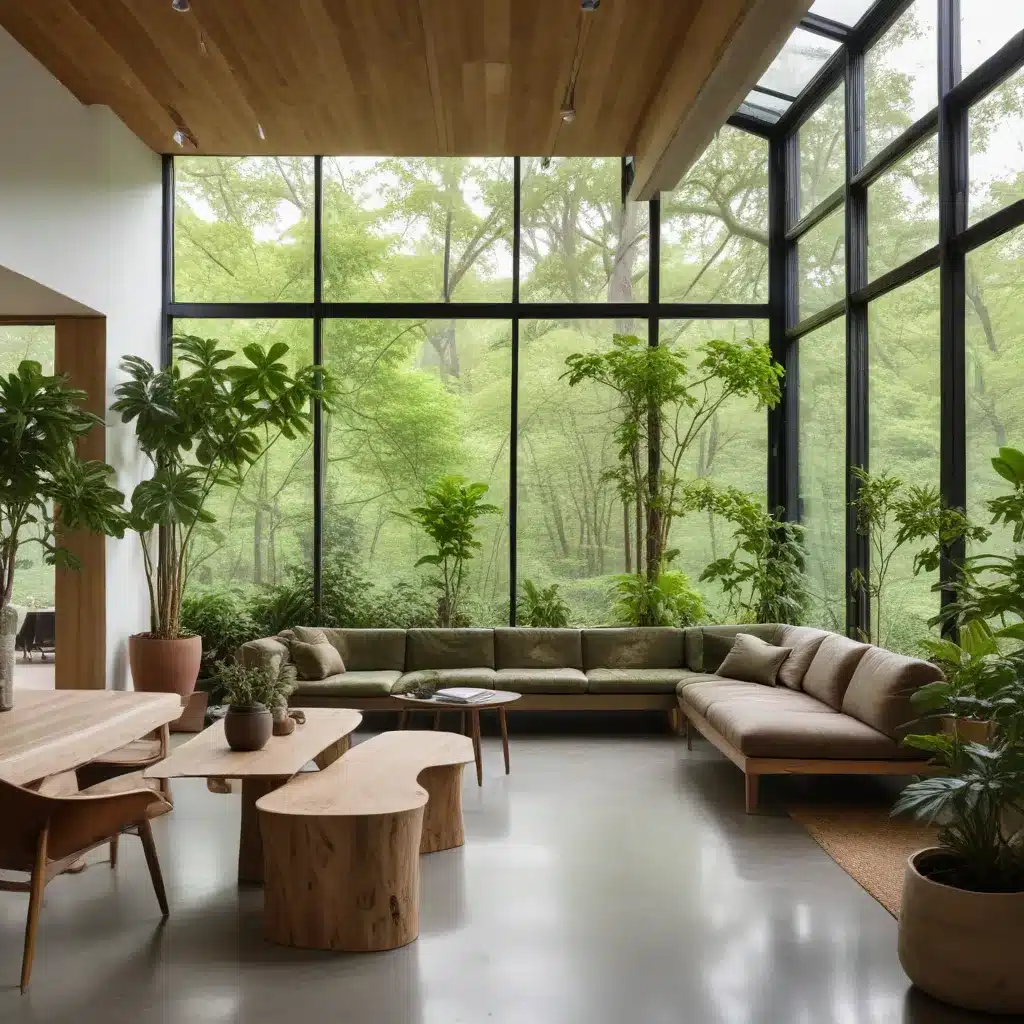In our increasingly urbanized and technology-driven world, the yearning for a deeper connection to the natural world has never been more palpable. This desire has given rise to the captivating concept of biophilic design – an interior design philosophy that seamlessly integrates elements from the natural environment into our living spaces. As a seasoned home improvement consultant, I’m thrilled to share how you can harness the power of biophilic design to transform your home and embrace the restorative essence of nature.
The Benefits of Biophilic Design
Biophilic design is not merely a passing trend; it is a holistic approach that has been scientifically proven to enhance our well-being, boost productivity, and promote more sustainable living. By consciously incorporating natural elements into our homes, we can unlock a myriad of benefits that positively impact our daily lives.
Enhancing Well-being
At the core of biophilic design is the understanding that humans have an innate affinity for the natural world. By surrounding ourselves with nature-inspired features, we can experience a profound sense of calm, reduced stress levels, and improved mood. Exposure to natural light, soothing sounds, and lush greenery can have a restorative effect on our physical and mental health, transforming our living spaces into personal sanctuaries.
Boosting Productivity
Interestingly, biophilic design has also been shown to enhance productivity and creativity, particularly in work environments. Studies have found that the presence of natural elements can enhance focus, cognitive function, and overall job satisfaction. By incorporating biophilic elements into your home office or study, you can create a stimulating and rejuvenating workspace that inspires your best work.
Promoting Sustainable Living
Embracing biophilic design also aligns with the growing emphasis on environmental consciousness and sustainability. Many biophilic design strategies, such as maximizing natural light, using renewable materials, and incorporating indoor gardens, can contribute to a more eco-friendly and energy-efficient home. This holistic approach to design not only benefits your well-being but also minimizes your carbon footprint, making it a winning proposition for the conscious renovator.
Incorporating Biophilic Elements
So, how can you bring the restorative power of nature into your living spaces? Let’s explore some of the key biophilic design elements that can transform your home.
Natural Lighting
One of the foundational principles of biophilic design is the importance of natural light. By strategically placing windows, skylights, and glass doors, you can flood your rooms with the warmth and radiance of the sun. This not only enhances the aesthetic appeal of your space but also has a profound impact on your circadian rhythm, sleep quality, and overall mood.
Greenery and Potted Plants
Incorporating lush greenery is a hallmark of biophilic design. From towering indoor trees to delicate succulents, the addition of plants can purify the air, boost humidity, and infuse your space with a sense of vitality. Work with an interior designer to curate the perfect arrangement of green walls, hanging planters, and mini gardens that complement your overall design vision.
Water Features
The soothing sounds of water can have a calming effect on the senses, helping to create a serene and meditative atmosphere. Biophilic design embraces the incorporation of water features, such as indoor fountains, reflecting pools, or even small tabletop water elements. These natural accents can elevate the sensory experience of your living spaces.
Biophilic Design Strategies
Beyond the individual elements, biophilic design also considers the overall spatial configuration and material choices to foster a harmonious connection with nature.
Maximizing Natural Views
Whenever possible, position your living spaces to take advantage of picturesque outdoor vistas. Strategically placed windows, sliding glass doors, and even skylights can frame captivating views of nearby gardens, parks, or bodies of water, allowing you to feel a deeper sense of integration with the natural world.
Textures and Materials
The selection of natural materials, such as wood, stone, and bamboo, can create a warm and tactile experience within your home. These organic textures not only evoke a connection to nature but also contribute to the overall aesthetic harmony of your biophilic-inspired design.
Spatial Configurations
The layout and flow of your living spaces can also play a crucial role in biophilic design. Consider open floor plans that seamlessly transition from indoor to outdoor areas, blurring the boundaries between the built and natural environments. This sense of fluidity and interconnectedness can foster a greater appreciation for nature within your home.
Renovation Ideas for Biophilic Spaces
As you embark on your home renovation journey, here are some inspiring ideas to incorporate biophilic design principles into your living spaces:
Living Walls and Vertical Gardens
Transform a bare wall into a lush, green oasis with a living wall or vertical garden. These verdant installations not only add visual interest but also help to purify the air and create a serene, nature-infused ambiance.
Skylights and Atriums
Strategically placed skylights or atriums can flood your interiors with an abundance of natural light, enhancing the connection to the outdoors. These architectural elements can also serve as focal points, drawing the eye upwards and creating a sense of openness and tranquility.
Outdoor-Inspired Interiors
Embrace the biophilic design ethos by incorporating earthy tones, natural textures, and organic shapes into your home’s decor. From a soothing color palette of greens and terracottas to the use of reclaimed wood and bamboo furnishings, these elements can evoke the spirit of the great outdoors within your living spaces.
As you embark on your next home renovation project, I encourage you to consider the transformative power of biophilic design. By thoughtfully integrating natural elements, you can create a living environment that not only looks beautiful but also nourishes your well-being and connects you to the restorative beauty of the natural world. For more inspiration and expert guidance, be sure to visit Reluctant Renovator – your go-to resource for all things home improvement.




